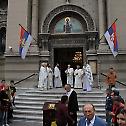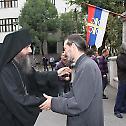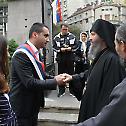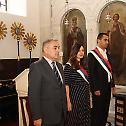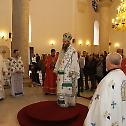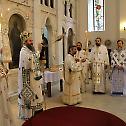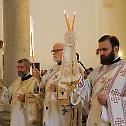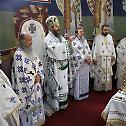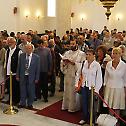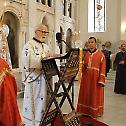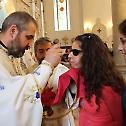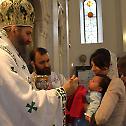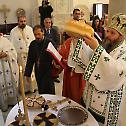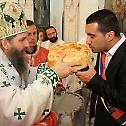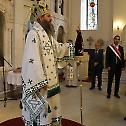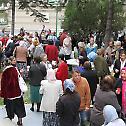Feast day of the church of Saint Alexander Nevsky
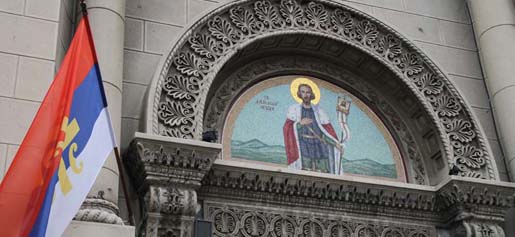 The feast day of Saint Alexander Nevsky was solemnly celebrated with Holy Hierarchal Liturgy in the church devoted to the great Russian saint in Belgrade
The feast day of Saint Alexander Nevsky was solemnly celebrated with Holy Hierarchal Liturgy in the church devoted to the great Russian saint in Belgrade
With the blessing of His Holiness Irinej, Serbian Patriarch His Grace Bishop Andrej of Remesiana served the Holy Hierchal Liturgy with the concelebration of the clergy of Archbishopric of Belgrade-Karlovac. The service was attended by Dr. Mileta Radojevic, director of the Office for Cooperation with traditional Churches and religious communities. The Bishop cut the slava cake with this year's hosts of the slava, Mr. Dejan and Mrs. Dejana Doder. After that the agape lunch followed.
About the church of Alexander Nevsky
The first Dorcol's church was a mobile military Russian church which was brought to Serbia in 1876 by the voluntary Russian corpus during the Liberation war from 1876-78. This church, which patron was Alexander Nevsky, famous Russian military leader and prince, was built on the place of the Great market, today's Students' square. After the war it was moved to the courtyard of the Cathedral church, and then in the building of the Great school and instead of this church, for the needs of the citizens of Dorcol, in 1877 a smaller church was built devoted to Saint Alexander Nevsky on the place which is formed by three streets - Dusanova, Dubrovacka and Skenderbegova. The municipality demolished this church in 1881 and on its place built a school. In 1894 Metropolitan Mihailo consecrated the foundatons of a new church on the corner of Dobracina and Car Dusanova, but due to underground waters and bad foundations the construction did not continue. Only in 1912 on a new location, on the place where Dusanova, Dositejeva, Skenderbegova and Francuska street meet, a construction of a new church began, which foundations were consecrated on 12 may the same year and the construction continued after the World War One. This church was built in Serbian medieval church architecture style of the "Morava school". It was built according to the project of Jelisaveta Nacic, the first woman-architect in Serbia.

